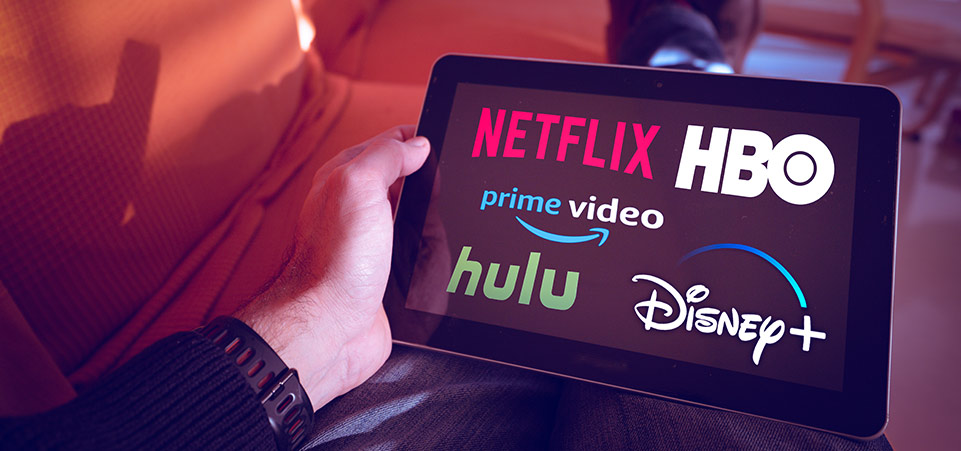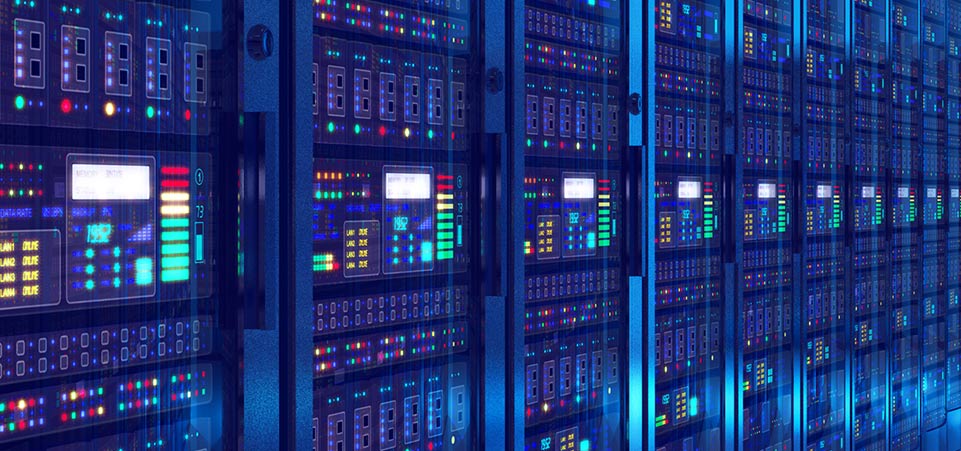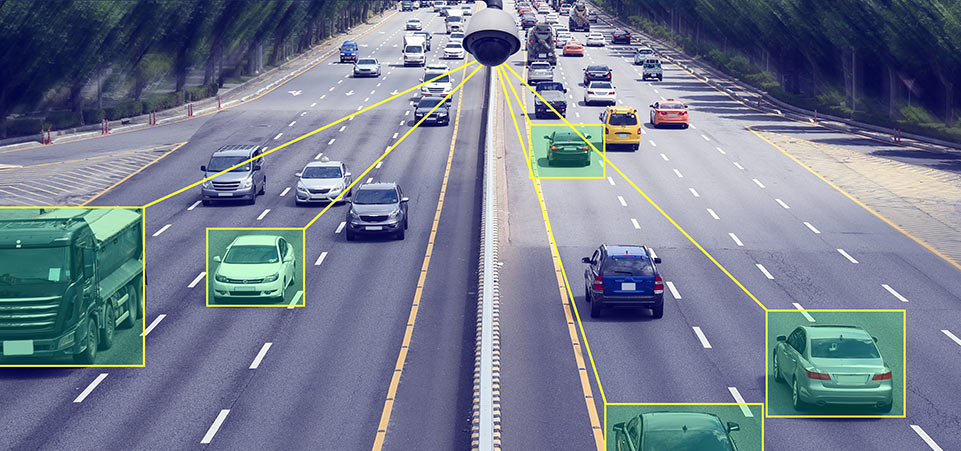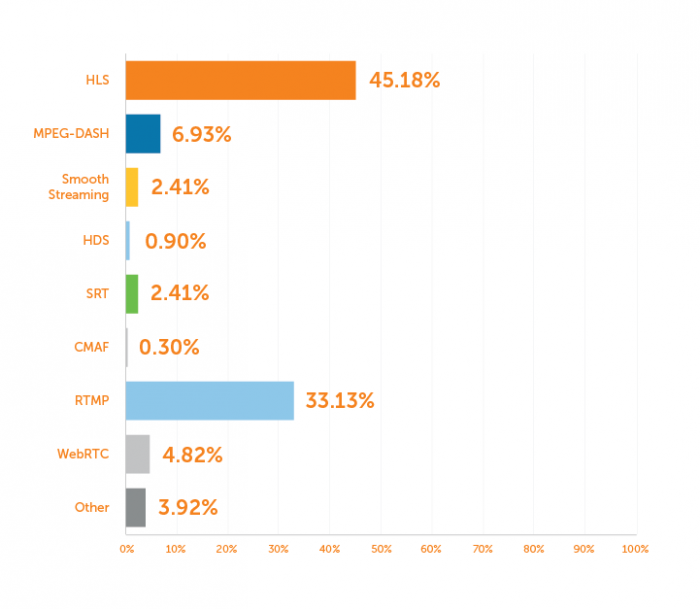10 Streaming Trends for 2020

Update January 2021: We’ve published a more recent list of streaming trends, 10 Streaming Trends for 2021. Check out the post to learn about the most cutting-edge developments in the streaming industry.
Autonomous vehicles promise to turn drivers into hands-free viewers of live entertainment, while 5G connectivity will build artificial intelligence (AI) and augmented reality (AR) into the fabric of everyday life. Video streaming will help power these innovations and more — reinventing the way we live, work, and play.
While the ‘streaming wars’ have captured the media’s attention, the most exciting streaming trends in 2020 go far beyond broadcasting. Yes, the launch of Disney+ — and the repercussions on incumbents like Netflix et al. — will shake up the OTT landscape. But we’d rather speculate on so many other exciting developments.
Ubiquitous streaming-enabled cameras will soon transform our urban areas, homes, bodies, and lives. What’s more, this will touch every industry (including healthcare, surveillance, e-commerce, education, gaming, and fitness, to name a few).
Smart cities. Video-enabled IoT wearables. The convergence of the virtual and actual to create a new data-rich reality. These are the streaming trends we have our sights set on for 2020 and beyond.
If some of our predictions sound familiar, it’s because we’ve brought them up before. Technology takes time to mature and innovation requires collaboration. Even so, the time is nigh for rapid advancement.
Top 10 Streaming Trends for 2020:
- 5G and Edge Computing
- The Streaming Wars
- The Rise of Smart Ecosystems
- IoT and Video-Enabled Wearables
- Data, Data, Data
- Focus on the Customer
- Artificial Intelligence (AI)
- Personalization and Targeted Content
- Advanced Data Compression Leads to Higher Quality
- The Death of Flash and RTMP
1. 5G and Edge Computing
Many of the topics discussed in this article — from smart cities and wearable tech to augmented reality (AR) and artificial intelligence (AR) — hinge on mind-bogglingly fast connectivity. 5G and edge computing make this possible.
As the fifth generation of mobile communications, Cisco predicts that 1.4 billion mobile devices will be 5G-capable by 2023. Digital Trends writes:
“While you may be thinking that 5G is just a little faster, a little more reliable, and a little newer, it’s actually more than that. It’s a massive breakthrough that’s going to change the way devices connect to the internet, and more importantly, to each other. In fact, as 5G rolls out over the next two years, it’s going to change everything that uses a wireless connection; at this point, it is pretty much everything.”
When it comes to streaming, 5G will deliver lower latency, improvements in energy consumption (a.k.a. battery life), and expanded use cases by removing barriers to deploying streaming technology. Applications that were once no more than science fiction — such as self-driving cars — will become real life once 5G takes over. But only with edge computing.
5G and edge computing are inextricably linked. To deliver on the one-millisecond latency target set for 5G, edge computing brings computation and data storage closer to users. This improves response time and saves bandwidth by decentralizing processing and decision-making.
Cisco predicts that by 2022, 12 percent of mobile traffic will be over 5G, with the average 5G connection using 21GB of traffic per month.
2. The Streaming Wars
Both fragmentation and consolidation have ushered in a new era of direct-to-consumer streaming. Playing catch-up to Netflix, Disney first announced that it would be pulling its titles from the streaming service back in 2017. Next, Disney acquired 21st Century Fox in March of 2019. As the final step in this concerted effort to maintain hold of the media landscape, they eliminated middleman distributors by launching Disney+ just a month before we rang in 2020.

But this battle isn’t merely Disney versus Netflix. AT&T got in on the action by scooping up Time Warner, and the conglomerate will launch HBO Max in May 2020. Then there’s Apple TV+, a more affordable option offering the smallest library for the time being. The aftermath of this all-out battle will be far-reaching and turbulent.
For one, the binge mentality might be evolving. Shows like Game of Thrones that were rolled out over time performed better in 2019 than the shows that were dumped out all at once. And this makes perfect sense, too. People are more likely to chat about a long-anticipated episode than content that’s void of any release schedule. These shows also tend to be more memorable since they aren’t binged in a single sitting.
With so many streaming services now available, many predict that ad-supported video will make a comeback. Consumers will likely grow frustrated with having to pay for multiple streaming subscriptions. Ad-supported video is already the dominant model across the Asia-Pacific region, but following suit would force Netflix to rethink its entire operating model.
Finally, live sports will shape this splintering of audiences across digital channels. Such broadcasts have long been held as the saving grace for satellite and cable, but viewers are expected to follow as live sports broadcasts migrate to digital distribution platforms. Sling TV, ESPN+, and Hulu (the latter two of which are owned by Disney) are already competing for viewers in this arena.
Another consideration traditionally in favor of cable has been the delay that can occur when delivering video online. Nobody wants to hear their neighbors celebrate a game-winning touchdown while their own broadcast lags 20 seconds behind. Luckily, streaming content can now be delivered with even less latency than traditional broadcasts — making it the preferred format for live footage.
3. The Rise of Smart Ecosystems
Smart factories, smart stadiums, smart cities, you name it. 5G connectivity and video streaming will collide to create these intelligent ecosystems in the coming decade.

While human reaction time is more than 200 milliseconds, 5G is expected to send and receive information in one millisecond or less. When it comes to streaming, this means that digital objects will be able to replicate real-time interactions. These devices will no longer require human users as intermediaries; instead, they’ll send and receive data in an automated machine-to-machine fashion.
Microcosms of this technology are already alive and well: Smart houses with connected refrigerators, vacuums, thermostats, and lights — with streaming built into doorbell cams and garage doors — are, in fact, old news.
When it comes to smart cities, surveillance video will also play a significant role. The global city surveillance market is forecast to grow at an average annual rate of 14.6 percent from 2016 to 2021. Beyond that, video-enabled infrastructures will enhance traffic control, healthcare, city planning, resource management, and navigation. Streaming already powers many of these applications, but 5G will pave the way for more sophistication, emerging innovation, and streamlined integration across all communicating devices.
“More and more future smart cities will invest in IoT devices and sensors. They can be placed at bus stops, on garbage cans, airports, parking lots, buildings, roads and streetlights to provide immediate updates about things like traffic, potholes, crowds, and more. One example is in San Diego, where the city invested $30 million to upgrade almost 3,200 of their streetlights with LED lights, sensors, cameras, and microphones to help monitor traffic and spot crime.”
— Tom Amburgey of GovThink
Let’s take a closer look at the infrastructure behind this streaming trend: the Internet of Things (IoT).
4. IoT and Video-Enabled Wearables

The GoPro is old news. And while the Apple Watch should finally get a FaceTime camera in 2020, a new generation of video-enabled wearable devices will blow it out of the water.
Google Glass, for instance, embeds streaming technology into a pair of glasses. Wearers can consult remote experts across the globe — while continuing on with their work. The voice-controlled device uses augmented reality (AR) to display additional data in the periphery of sight and integrates with existing Google applications. This technology has already found traction in healthcare, manufacturing, and logistics.
Apple has also been dabbling with the concept of AR glasses for some time, and we’re excited to see the other functionality that such products will support. For instance, a similar device could display nutritional information while wearers peruse the grocery store or project a trail map for users navigating a ski mountain.
Streaming-enabled IoT — both wearable and otherwise — has been critical to healthcare for some time. Hospitals are equipping operating rooms with integrated streaming technology to improve surgical outcomes and enhance patient care. From laparoscopies and endoscopies to any robotic surgery, streaming allows doctors to perform minimally invasive operations that reduce recovery time for patients. 5G will extend these capabilities beyond operating rooms to include mobile users with wearable devices designed for the healthcare industry.
5. Data, Data, Data
If content is king, then data is the iron throne. We possess more data than ever before. But successfully wielding its power requires finding innovative ways to acquire, analyze, and act upon it.
Streaming data now makes up a considerable chunk of this raw information floating around, with video forecast to account for 82 percent of all internet traffic by 2022.

Barclays Analyst Brian Johnson explains, “a common saying in Silicon Valley… is that ‘data is the new oil’ — and enthusiasm for businesses that generate and analyze data is common across the technology space. Unlike oil, ultimately a finite and diminishing resource, data and uses of data expand exponentially.”
Need to gain real-time observability into stream performance? Data is the answer. Hoping to deliver more engaging content by increasing personalization? Try tapping into data. Looking to combine live streaming with AI for real-time content indexing? Data helps get you there.
No matter the goal, a data-first approach will differentiate the industry leaders from the rest of the pack in 2020 and beyond.
Examples of how data will enrich live streaming:
- Advanced Stream Analytics: When it comes to live streaming, broadcasters have one chance to get it right. Today’s viewers won’t give feedback when video quality or availability is lacking. They’ll simply tune out. Many streaming service providers are moving toward the broadcast model of offering real-time video and viewer analytics, thereby using data as the voice box of end-users. This means going beyond log files to provide holistic visibility into the entire workflow and broadcast life cycle. From there, content distributors can inspect, interpret, predict, and prevent any issues — via both manual action and self-healing capabilities.
- Content Personalization and Targeting: More data means more opportunities, but only if broadcasters manage to capitalize on it. Insight into viewer demographics and behavior allows content distributors to make personalized recommendations for each customer, deliver targeted ads that keep viewers engaged, and react to changing patterns in how customers are using a given service or platform.
- Real-Time Content Indexing: Facebook’s facial recognition software is more accurate than the FBI’s. Why? Because the social media platform’s extensive photo database grows each day, and as a result, the algorithm improves. Data is the steppingstone to building out sophisticated AI systems, which are instrumental in the live streaming space for content indexing. This technology promises to replace manual monitoring and cataloging, which is why popular social media apps like TikTok are already leveraging AI to achieve just that.
Beyond these exciting developments, data sustainability will also trend in 2020. The tidal wave of data is growing with each click. Over the next decade, companies will be tasked with finding an environmentally-friendly way to store and transport it. Several organizations are looking to go green by cooling their servers with fresh air-based systems and even leveraging the heat emitted from server facilities as a source of renewable energy.
6. Focus on the Customer
As we’ve described, 2020 beckons in the age of internet-connected everything. And with technology so entrenched in our lives, a focus on the customer is paramount to fostering seamless experiences. Customer success will drive decision-making for both B2B and B2C applications.
Streaming already extends organizations’ abilities to put the customer first. Live commerce, the fusion of streaming video and e-commerce, promises to revolutionize the retail industry by reaching shoppers on their own terms. Then there’s customer support. Just imagine the ease of live streaming to a mechanic (and thereby troubleshooting any issues) without having to take your car into a shop.
Customer success is the engine for developing innovative offerings with holistic support. Even Apple, Amazon, and Google recently founded an alliance to ensure compatibility across their smart home devices. Competitors or not, they realized that the customer is always right. And delivering a streamlined experience will ensure mutual success.
On the B2B side of it, a handful of streaming vendors are becoming more solutions-oriented by offering professional services. This can help accelerate time to value, speed up deployment, and enable business success for anyone looking to integrate streaming into a new application.
7. Artificial Intelligence (AI)
Thanks to Hollywood and Philip K. Dick, most of us have a healthy skepticism of AI. But what about the positive ways that it can revolutionize live streaming? There are no limits to how these two technologies can be put to work together. AI will deliver more efficient ways to encode, distribute, and organize streaming data.
Computer vision, or the ability for machines to identify objects and automate tasks that previously required the human visual system, is now instrumental to content indexing, as mentioned above. Beyond that, industry leaders are leveraging it to tackle some of the issues that have popped up in the live streaming space.

The dangers of streaming are well documented. An increasing number of people have chosen to broadcast crimes and other horrific content. Everything from fatal car accidents and incidents of torture to sexual assault and suicide has found its way to viewers’ screens. We can expect AI to interpret streaming content and automatically extract metadata. From there, organizations will be able to monitor harmful and flag illicit content more effectively.
There’s also the problem of copyright infringement. Similar to the ways AI serves as a tech-enabled form of censorship, learning-based video tools will increasingly be relied on for live analysis of copyrighted material.
8. Personalization and Targeted Content

Cable is dying. And that’s a good thing. OTT opens up opportunities to deliver more personalized experiences. Plus, the data gathered therein gives publishers actionable insight to engage customers.
For this reason, the ad world has been evolving. Advertisers today can deliver highly effective ads across multiple screens — to the right audience and at the right time. The sophistication of automation software makes it all possible.
Nobody likes watching ads that aren’t pertinent to them, so why not use AI to improve personalization? Just take it from Peter Naylor, SVP of sales at Hulu: “Whether you’re a streaming service or in the traditional cable business, delivering relevant ads is key. Viewers don’t hate ads, they hate irrelevancy.”
Just what does relevancy look like in the video advertising world? How about airing a commercial for lemonade during a heatwave or advertising anti-frizz shampoo when humidity is at its worst?
Interactivity will also take center stage. The Mad Men era of passive advertising is outdated. Expect innovative formats and gamification to make engagement that much higher, giving viewers the option to pick their own adventure or toggle between product choices.
What’s next? Live streaming facial recognition might enable physical advertisements personalized to each passerby. If this sounds similar to that scene in the Minority Report, it’s because it is.
9. Advanced Data Compression Leads to Higher Quality
If there’s one constant when it comes to technology, it’s that digital information continues to shrink in physical size. In 1946, we started out with a 28-ton computer. Today, we’ve cramped greater computational power into a chip smaller than a grain of rice.
Data compression enables these advancements, with audio and video codecs paving the way in the streaming industry. Quality and compression go hand in hand. Improvements in live streaming compression have allowed us to move from standard 480p broadcasts in the early 2010s to 720p and 1080p videos today. 4K is burgeoning, and after that, 8K will take over.

4K resolution describes the number of pixels displayed on a screen. Roughly 4,000 pixels go across the width of a screen when streaming in 4K. This ultra-high-definition format trumps 1080p, which accounts for only a quarter of the resolution in a 4K display. As the next evolution of ultra-high definition, 8K is twice the resolution of 4K.
It will take some time for 8K-capable TVs and cameras to saturate the market. What’s more, live streaming at this resolution will lag behind on-demand. But one way or another, 2020 marks our entry into the decade where 8K takes off.
This transition is crucial. Viewers don’t appreciate high-quality video; they simply expect it. In our Streaming Latency Report, respondents indicated that high-quality video ranked highest in their UX priorities. 8K will undoubtedly satisfy this need, and higher frame rates will also make an appearance.
10. The Death of Flash and RTMP
The final streaming trend on our 2020 list is the death of Flash. While looming for some time, and in no way surprising, this state of affairs represents just how dynamic the streaming industry is.
It’s a different world than it was ten years ago. Flash Player and the RTMP protocol were the dominant delivery mechanisms for live streaming up until the early 2010s. This combo supported lightning-fast video delivery, but the technologies weren’t optimized for great viewing experiences at scale.
The industry eventually shifted in favor of HTTP-based technologies like Apple’s HTTP Live Streaming (HLS) protocol. Today, HLS is the most common format for delivery, with 45% of respondents to our Streaming Latency Report indicating they use it.
Which streaming formats are you currently using?

HTTP-based adaptive streaming has paved the way to better user experiences and any-device delivery, making the dreaded buffer beach ball a rare sighting. While RTMP is still used for content acquisition, even that’s predicted to end soon.
“Legacy protocols such as real-time messaging protocol (RTMP), developed over a decade ago to encode video and move it across networks to clients, will likely be displaced by newer solutions such as secure reliable transport (SRT), designed to further decrease latency and meet the demands of live and on-demand streaming.”
The aforementioned SRT is an RTMP-alternative designed to deliver low-latency streams over suboptimal networks. We expect it to gain prominence as content distributors recognize the importance of smooth playback, minimal lag, and pristine video quality.
More Data + Improved Connectivity + Advanced Technology = Endless Possibilities
There you have it. Data, connectivity, and advanced technology guarantee to foster a hot pot of innovation in the streaming industry. For this reason, data, artificial intelligence (AI), and 5G serve as the three pillars that will advance video streaming into the next decade.
Netflix is now a verb and FaceTime is a means of communication. Doggy daycares stream pet content to websites and doorbell cams stream surveillance video to homeowners’ mobile devices. Drones, GoPros, and medical devices all have this technology built in. And any brand trying to stay relevant knows that live video streaming will get them there.
Our recommendation for anyone looking to shape the future of streaming? Leave no stone unturned.
FREE TRIAL
Live stream and Video On Demand for the web, apps, and onto any device. Get started in minutes.
- Stream with WebRTC, HLS and MPEG-DASH
- Fully customizable with REST and Java APIs
- Integrate and embed into your apps




